“Imagination is more important than knowledge.” – Albert Einstein
I never worked on sight words with my now-Kindergartner during her years in Preschool or Pre-K. Nor did I purchase workbooks that drill in letter and number skills. Instead, when the kiddo and I wanted to “work,” our afternoons were filled with creative play, using learning materials like playdough, crayons, paper and glue. Early on, we had an art supply box bursting the seams with random stuff like buttons, scraps of fabric, googly eyes, jewels and feathers. Now, don’t get me wrong, I’m not saying sight words, letters and numbers aren’t important—because they are. I just tend to be more drawn towards the “making” of stuff, rather than the “remembering” of stuff. I come from a family of creative people, so that’s the way my brain works.
My kiddo didn’t know the entire alphabet the start of Pre-K, but she knew every color and could talk your ear off about her stick-figure people. Mo didn’t know all the letter sounds on the first day of kindergarten, but she had everyone beat for imagination, in and outside of the classroom. So, now that Miss M is in the middle of her first official school year, her skills in math, reading, science and social studies have taken off, and she’s excelling with little to no previous instruction.
The worries I had of her not being able to keep up with kids who already read 40 sight words, or knew every letter sound, are gone.
Why? Because our house is a creative house. According to Mary Ann F. Kohl, author of Primary Art: It’s the Process, Not the Product, creating art may boost young children’s ability to analyze and problem-solve in a myriad of ways; and research done by the International Child Art Foundation, states that, “a child who is exposed to the arts is more likely to be creative, inspired to generate new information, and capable of adding to the stock of knowledge, be it in the arts, science or technology.”
Why is Art Important?
It Builds Self-Esteem
Art is fun, but art is also work. According to the National Art Education Association, “through art, our students learn the meaning of joy of work- work done to the best of one’s ability, for its own sake, for the satisfaction of a job well done.” For example, I know you must have noticed, at one time or another, how hard your toddler scribbles at the page, to the point of even breaking crayons, or how messy your preschooler might get when making a collage. And, who can miss the proud presentation of a brown mess of a painting, which to you might seem like nothing, but to the little artist, is serious business?
It Helps Kids Process Stuff
It’s a zoo out there, especially to a little kid. With new information (especially in this modern age) zinging back and forth, All. Day. Long., kids need a safe place to process what’s going on. Art can be that place. Jean Van’t Hul, author of The Artful Parent states that “art allows [kids] to explore feelings and deal with both daily and significant events… Movement, image, color, line and imagination all help children express themselves in a multidimensional way— a way that words may not be able to do…”
It’s a Language We All Speak
In Reggio Emilia school curriculums, children’s art represents “visible thinking.” Education.com refers to art as as “a langueage, a symbol system, a literacy. Through art, children invite us into their thoughts by communicating through words, drawing, painting, clay, and a number of related “languages” to express these.” Not all kids can talk in full sentences by three or read by five, but every kid can draw or paint or sculpt their ideas in fruition. It’s a universal means of communication— it’s no accident that the first human languages were hieroglyphics (i.e. drawings).
How To Help Kids Be More Creative
You don’t have to be an artist, or come from an artsy background, to infuse a little more creativity into the lives of your kids (and by osmosis, your own, too!). It’s as easy as simply being aware of creativity, that it comes in all shapes and forms.
I’ve included five easy tips below that’ll get you started. Anyone can do art… and everyone should!
Have the right supplies
Yes, supplies can get expensive, but even having the basics (crayons, pencils, paper, glue, etc.) will invite kids to draw and imagine. You can also make art from things found outside: leaves, rocks, dirt, and flowers. Art could be decorating cookies with sprinkles, or playing with playdough, or even using a paintbrush and water on the pavement. The possibilities are endless! Our own supply stash is now stored in two bins, includes several store-bought “art kits.” If you want the ultimate art supply list, I suggest taking a peek at Jean Van’t Hul’s 25 BEST Kids Art Materials.
Make a Plan
You schedule their doctor’s appointments, practices, birthday parties and playdates. Why not schedule time for art, too? If you designate a time for art, it’s more likely to happen. Also included in scheduling is the prep you’ll need to do before the project starts. This is important because kids are more likely to be interested in, say, watercolors if there’s a work station set up when they walk in the door. If they have to wait, they may lose interest.
Dedicate a space
Any crafty parent will tell you they have art supplies at the ready, and have usually dedicated a space for it somewhere in the house. We have a table set up on the porch, as well as easy-to-reach materials in the family room. There are countless blogs and “pinned” art rooms you can dig up online for inspiration. I have always loved Rachelle (of Tinkerlab) Doorley’s creativity zone. Living in the Bay Area means minimal square footage, but she’s managed to give her kids an amazing space for making and creating.
Get Messy (and be OK with it!)
Being creative doesn’t automatically mean getting messy, but it sure does help! When the creative juices are flowing, it’s easy to get carried away. It’s part of the process. So, everyone, even Type-A folks (I fall into this category) should be okay with a little mess here and there. Just take the steps to prevent any permanent damage: invest in oil cloths (or plastic table clothes), make sure your little artists wear old clothes with smocks on top, and don’t use anything that’s permanent.
Go See It
As extra-credit, or, maybe because you just can’t handle the process at home, take your budding Picassos out to a local art museum. Many world-class institutions offer free Saturdays for families, kid classes on the weekend and summers, and family-friendly docent tours that make art understandable for even the youngest child. There are several kid-friendly places in Dallas to take the kids, and for starters, check out DMB contributor Erin’s amazing round-up here on why you should (& how easy it is!) be taking your kids to art museums. You’ll also find our top spots for discovering art with kids in Dallas, right here.
Do you do art with your kids? Tells us about your experiences in the Comments below.
— Gabby Cullen
All images by Gabby Cullen




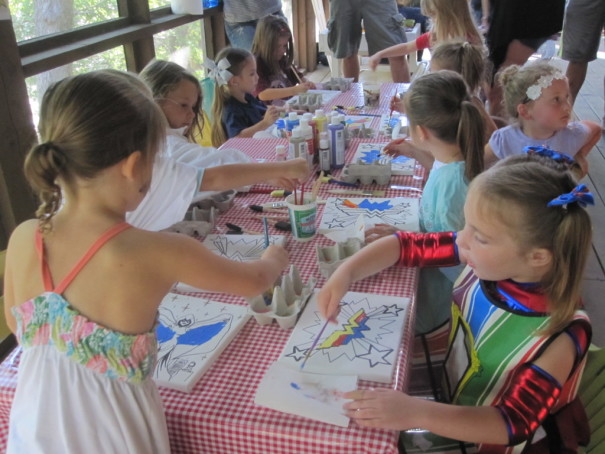

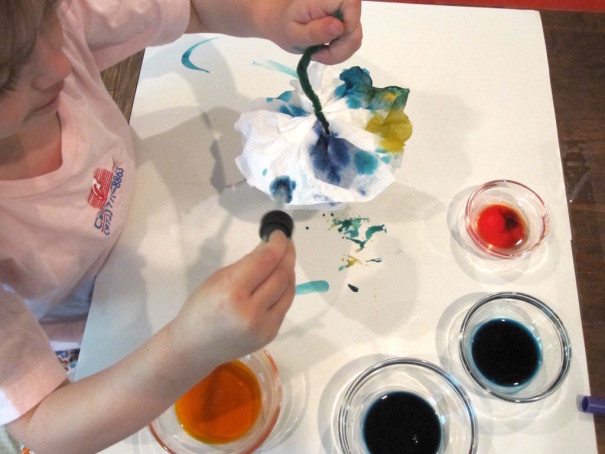

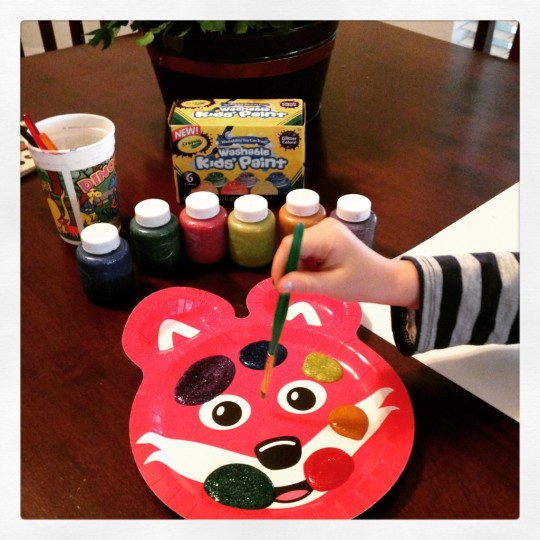
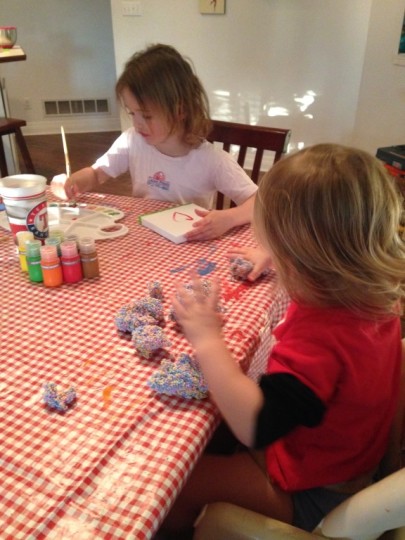
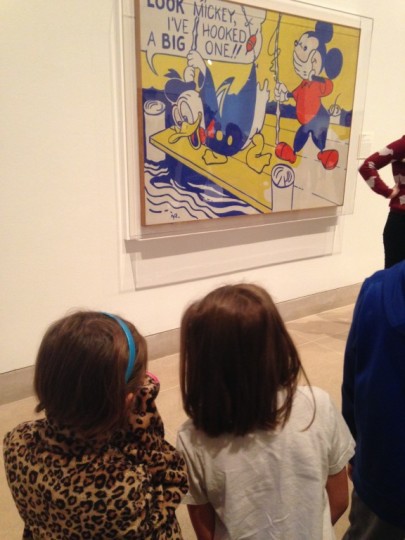









I love this! I love doing art with my 2 and 4 year old, and they get a thrill out of it too. We are actually having a painting party for my 2 year old tomorrow to celebrate her birthday…foam paintbrushes, washable paint, canvases, and masking tape so they can create abstract pieces to take home. Great article. Kids learn by doing, not thru drills.
Thanks Ashleigh! We threw a painting party for my six-year-old this fall and it was tons of fun!
This is such a great idea. Learning with hands on experiences is one of the best ways to grasp knowledge! Expressing the creative side also brings out the best part of your mind
Hi Brooks,
I agree completely. Thanks for reading!